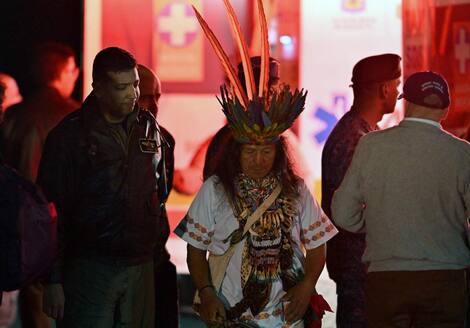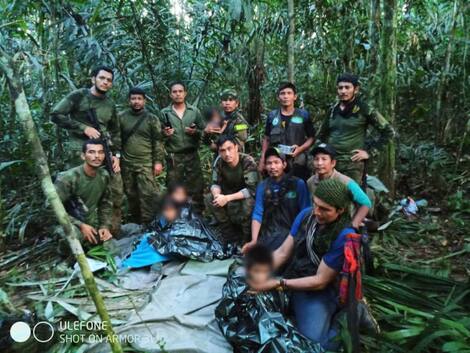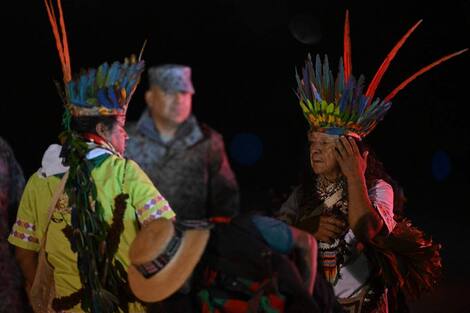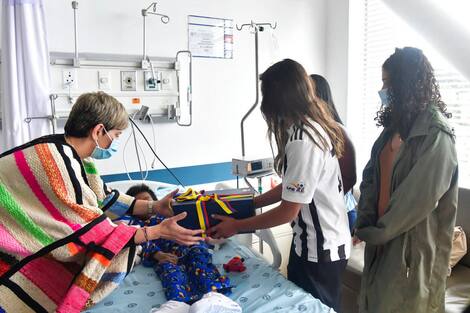
All commentators agreed on Saturday that the four children found alive after 40 days of wandering in the Amazon jungle of southeastern Colombia undoubtedly owed their salvation to their native ancestry.
• Read more: Four children missing in jungle for 40 days found alive in Colombia
• Read more: Tired, but ‘happy’: Children rescued from jungle in Bogotá
• Read more: Two surviving children celebrate their birthday in the forest
According to the National Organization of Indigenous Peoples of Colombia (OPIAC), “the survival of children is a bond taught from the mother’s womb, demonstrating the knowledge and relationship that the indigenous have with nature”.

AFP
From the beginning of the search, the day after the small plane crashed, which claimed the lives of the siblings’ mother and two adults, the family clung to this belief by emphasizing this aspect: their knowledge of the forest, its nature, its rules, its dangers and its symbols.

AFP
“Children of the bush,” according to their grandfather, knew how to survive by eating flour from crashed planes and retrieving food randomly dropped by military helicopters. But also by consuming the “seeds”.
The roots, seeds and plants they found were edible and they knew they were edible, Luis Acosta, national head of Colombia’s National Indigenous Organization (ONIC), told AFP.
“They are native children and they know the forest very well. They know what to eat and what not to eat. Because of this and their spiritual strength they were able to survive,” said Mr. Acosta promised.
The theme of “spiritual strength” keeps coming up in the mouths of these tribal leaders, commenting on this adventure, Mr. Acosta promised to deploy a tribal guard in front of the military hospital in Bogotá where the children are being cared for. “Spiritual” with them.

AFP
“We have a special relationship with nature,” says AFP Javier Bettencourt, another head of ONIC. “The world needs this special relationship with nature, like the tribes, to support those who live in the forest and take care of it.”
Of the 40 days the search lasted, soldiers and natives joined forces for about twenty days.
President Gustavo Pedro, like many other officials, praised this “meeting of indigenous and military knowledge” in favor of the “common good” combined with “respect for the forest”.

AFP
The army started with classic methods the day after the accident on May 1, specifically the audio recordings of the children’s grandmother broadcast from helicopters asking them not to move and warning them of their search.
“It was then President Pedro who helped us unite,” said Mr. Acosta told local reporters.
“Eight days after the search began, in the first meeting, the president told us that we must go out together because the army cannot do it alone.”
“We organized and coordinated ourselves and started,” the ONIC president explained. About 84 volunteers, members of the native guards of the departments of Caqueta, Putumayo, Meta and Amazonas, later joined the hundred commandos of “Operation Hope”.
Operating in several provinces, these “indigenous guards”, armed only with sticks and colored scarves, ensure the protection of communities and the surveillance of indigenous territories, confronting or coexisting with the numerous armed groups operating in the country. Their relationship with the military is also strained at times.

AFP
In Gueriyar forest, both of them worked. Each day, they drew up a collective report of activities, as the natives performed their own rituals to the “spirits” of the forest using their traditional mamba (a powder made from cacao leaves and ash) and the fermented drink syrinji.
Using knives and spray paint, rescuers left marks or small “traps” (cut or strategically placed trunks) here and there to guide the children.
Tribal medicinal knowledge was used to adapt to the jungle hell and treat cuts, sprains, insect bites, fatigue and body aches.

AFP
Mr Acosta said the natives “worked in rain, storms and many other difficult conditions, but always with hope and spiritual faith that they would be found”.
Finally, a native ranger finds the children, in an unexplored area.





More Stories
2021 Video is coming back | Trump’s pairing stirs controversy: Is Kamala Harris unhappy at the helm?
Barack Obama has announced that he will support Kamala Harris as a candidate for the presidency of the United States
Chaos after attack on Trump: New video confirms agents saw shooter